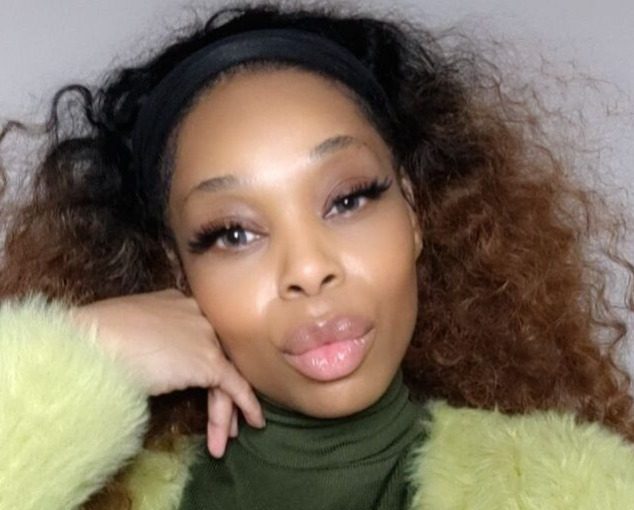When we think of disability, we often picture visible aids: a wheelchair, a cane or a prosthetic limb. But not all disabilities fit neatly into society’s expectations. Some are invisible, hidden beneath the surface yet profoundly impactful. These are the “invisible ones”—the disabilities we don’t see but whose presence is deeply felt.
Meet Desirée C. Couture—a powerhouse in the world of fashion and personal branding. As a celebrated fashion stylist, actress, designer and consultant, Desirée’s work graces red carpets, tells powerful stories through style, and redefines personal reinvention. She transforms appearances, empowering her clients to own their style. But beyond the glamour and creativity, there’s a deeper layer to her story—a reality that few understand.
Desirée (see image above) has post-concussion syndrome (PCS), a brain injury she sustained from a severe car accident. While her disability might not be immediately visible, its effects ripple through her emotions, memory and daily life.
“It’s frustrating,” Desirée shares. “When you tell a physician all the things you’re experiencing, and they just say, ‘It will get better with time.’ I’ve had to take my rehabilitation into my own hands.”
Her journey highlights the often-overlooked challenges of living with an invisible disability. The lack of awareness and understanding in society fosters dismissive attitudes, creating barriers to accessing essential support and accommodations. In an industry that celebrates appearances, Desirée has hesitated to share her disability, navigating the delicate balance between vulnerability and the fear of stigma or misjudgment.
Why “Invisible” Isn’t Always the Right Word
The phrase “invisible disability” has sparked important conversations—and criticisms. While it aims to describe conditions that aren’t immediately apparent, some argue that it inadvertently suggests the person themselves is unseen or overlooked. This framing can reinforce feelings of erasure, as though their struggles, strengths and humanity are somehow less valid or worthy of recognition simply because their disability isn’t visibly obvious.
Others prefer the term “non-apparent disability,” which avoids the implication of invisibility while still acknowledging the unique challenges faced by individuals whose conditions aren’t readily visible. This shift in language recognizes that disabilities manifest in many ways, and it invites society to move beyond surface-level assumptions.
As one advocate put it, “Non-apparent disabilities challenge us to rethink our biases about what disability looks like. It’s not about visibility—it’s about understanding that disability is part of the human experience, regardless of whether it’s immediately recognizable.”
“Invisible disabilities don’t make us any less capable,” Desirée emphasizes. “It’s about finding new ways to cope and thrive, even when the world doesn’t see or understand.”
Desirée’s story embodies this reality. Her journey reminds us that disabilities, whether seen or unseen, deserve equal respect, recognition and accommodation. It challenges us to rethink the words we use and how they shape the narratives surrounding those living with non-apparent disabilities.
Breaking Barriers Through Fashion
For Desirée, fashion is more than just aesthetics—it’s a tool for healing and empowerment. After her injury, she discovered how deeply personal style could influence confidence and mental well-being. By merging her lived experiences with her professional expertise, Desirée has transformed fashion into a medium for helping others manage life’s transitions. Whether supporting someone through grief, a career change, or rediscovering their identity, she believes that how people present themselves can unlock strength, joy and resilience.
As Desirée puts it, “The positive endorphins released when someone loves what they’re wearing can be a complete game-changer. My accident happened for a reason—because God knew I could make more people and myself happier doing what I’m doing.”
Beyond her work at Couture Images Incorporated, Desirée extends her influence through the nonprofit Brain Matters Inc, where she facilitates healing circles via Zoom and Teams. These spaces offer vital support for those dealing with brain health challenges. For Desirée, fashion and advocacy go hand in hand.
“It’s bigger than fashion,” she says. “This is about empowering people to feel confident and perform at their best—no matter where they are in life.”
Opening the Conversation
Desirée’s journey is a reminder of the importance of creating spaces where individuals with non-obvious disabilities feel seen, valued and supported.
At The Divas With Disabilities Project (DWD), we are dedicated to amplifying stories like Desirée’s. Our mission is to spotlight the diverse spectrum of disability experiences and foster a community where every voice matters.
Invisible disabilities may not be visible to the eye, but their impact is deeply felt. By starting meaningful conversations, challenging stereotypes, and pushing for true representation, we can ensure that the “invisible ones” are no longer overlooked or underestimated.
What does true inclusion mean to you? How can we build a world that better supports individuals with invisible disabilities?
Article written by Lucy Mueni, Social Media and Content Manager, Divas With Disabilities


